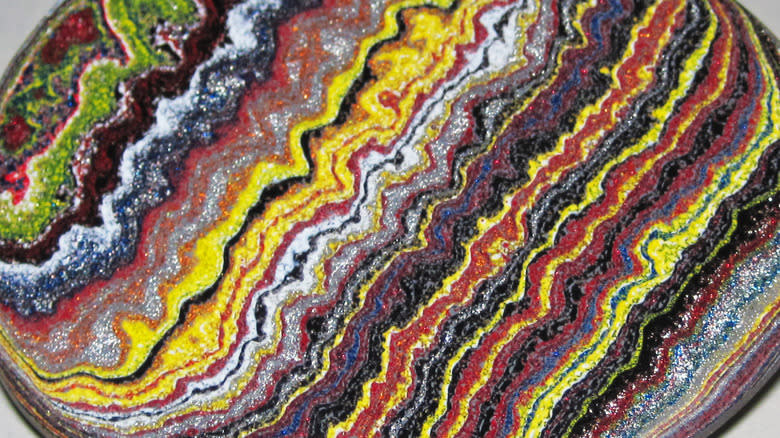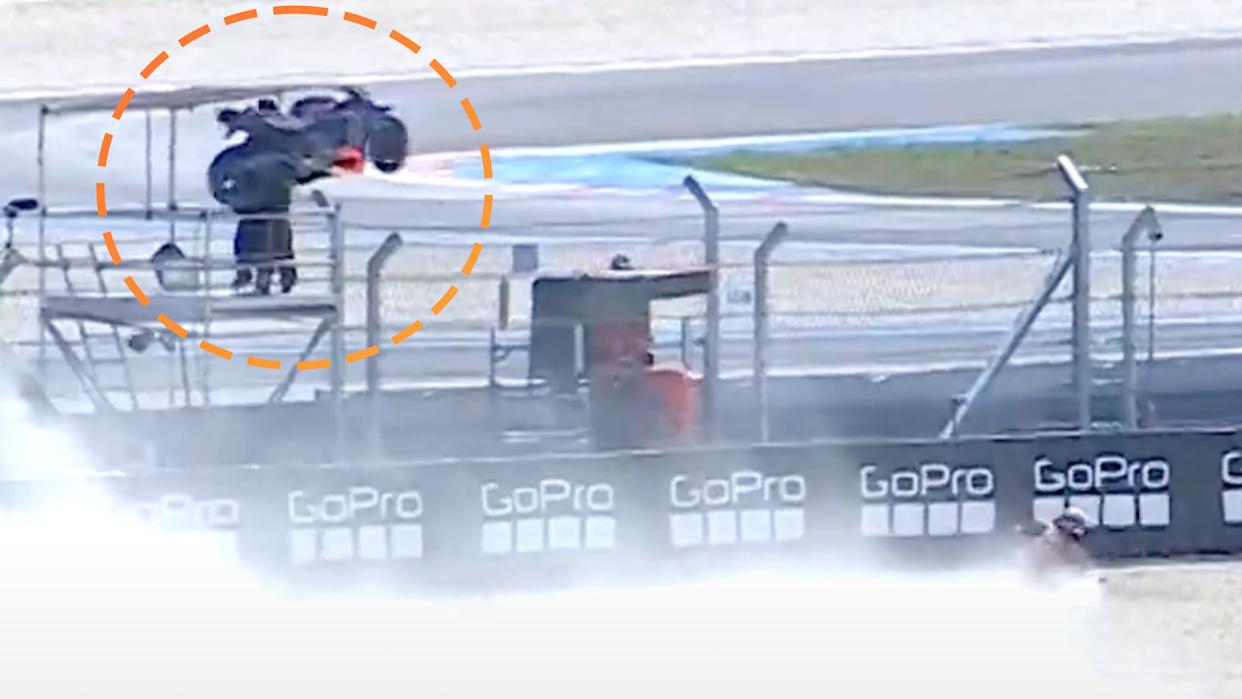
If you've ever wandered into the weirder corners of Etsy or Instagram, you might've seen a psychedelic-looking gemstone called Fordite. With its kaleidoscope layers and swirling color, it looks like something dug up on Venus and smuggled back through Space Force customs. The truth is less cosmic but still way cool — and it's not a rock at all. It's hardened layers of car paint. Yep — also known as Detroit agate, it's a man-made relic born from the gloriously messy, pre-robot days of spraying cars by hand.
Back then, before electrostatic sprayers and robots turned car painting into a sterile science project, workers hosed enamel paint onto bodies rolling down the line. Naturally, a lot of that paint missed and built up on the tracks and skids under the cars. Each time a body went into the oven to cure, those stray layers baked into rock-hard slabs. Do that a few hundred times and you get chunks of rainbow-colored history stacked in geological fashion from back when the paint on Ford Mavericks had fantastic names like Freudian Gilt or Anti-Establish Mint.
By the 1980s, factories switched to electrostatic painting, which basically glued paint to the body with magnets and ionization. Great for efficiency, but terrible if you were hoping to keep mining the world's weirdest gemstone.
Read more: These Are What You Wanted As First Cars (And What You Got Instead)
Painting By The Ages

What makes Fordite so special is that every piece is a literal cross-section of automotive history. Each layer is a paint chip chart, recording design fads without a single press release. The muted blacks and browns from the 1940s are in there, but the real prize comes from the 1960s and '70s — the candy-coated muscle car era. Think metallic purples, retina-burning yellows, and deep, glossy reds that no one in the beige-soaked 1990s dared to spray again. Luckily, some of the best manufacturer car colors ever sold seem to be making a comeback.
And despite the name, Ford wasn't the only unknowing artist. Plants across the country left their own palettes of overspray. Corvette's Bowling Green plant, known for more than having 'Vettes stolen from under their noses, produced a Corvette-specific variety, heavy on silvers and bright blues. Jeep's Toledo factory coughed up the occasional bullseye effect from rack drips. Each one is its own industrial ecosystem — as if the factory floor grew rings like the inside of an oak tree.
From Waste To A Showpiece
For years, Fordite was nothing more than a nuisance that line workers had to scrape off so the line wouldn't jam. But eventually, a few workers looked closer and realized they weren't just chiseling off garbage — they were mining accidental gemstones, which sounds like a great rock band. Some took it home, cut it, polished it, and wore it.
Today, Fordite is recognized by the Gemological Institute of America (GIA). Artists treat Fordite like any other gemstone, cutting with diamond tools and polishing the resin finish to resemble jewelry. How you slice it determines the look: cut flat, and you get stripes like candy-layered sandstone; cut across the lumps, and you find bullseyes and orbital swirls.
Because no factory has made the stuff in decades, supply is finite, and the value has skyrocketed. Rough chunks can be had for under $50, but rare colors and well-cut pieces can fetch much more. It's the ultimate automotive upcycled treasure — automotive history you can wear. Who knew overspray could outlast the cars themselves?
Want more like this? Join the Jalopnik newsletter to get the latest auto news sent straight to your inbox...
Read the original article on Jalopnik.








Comments